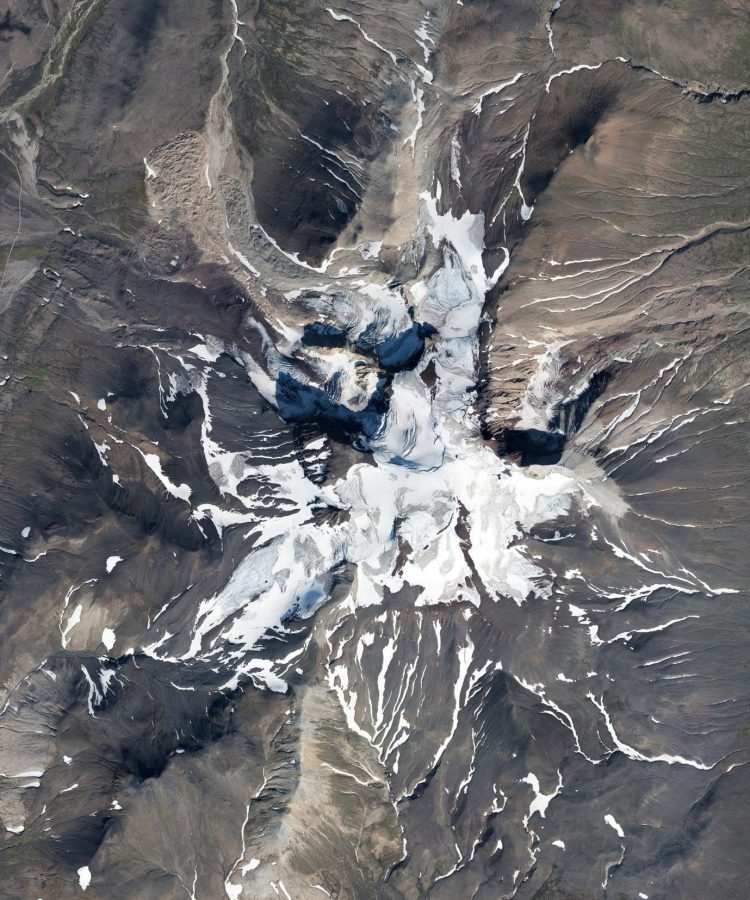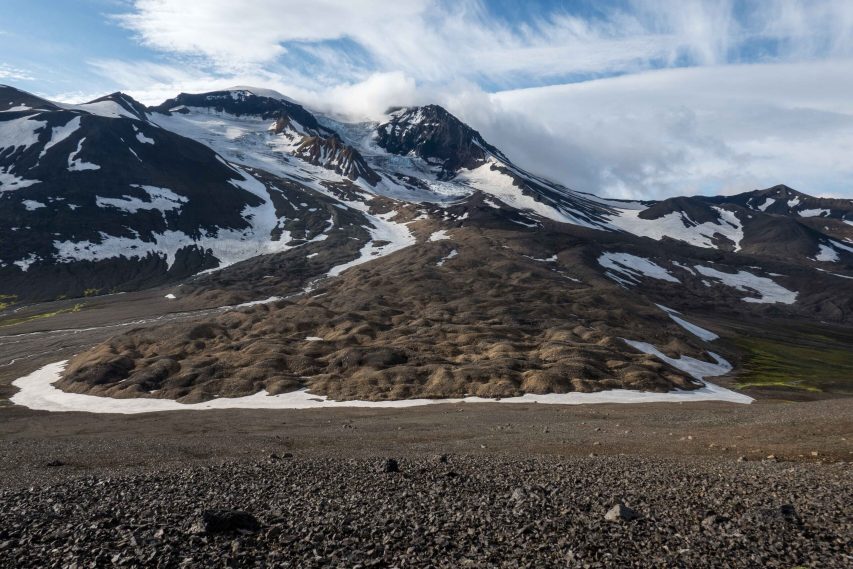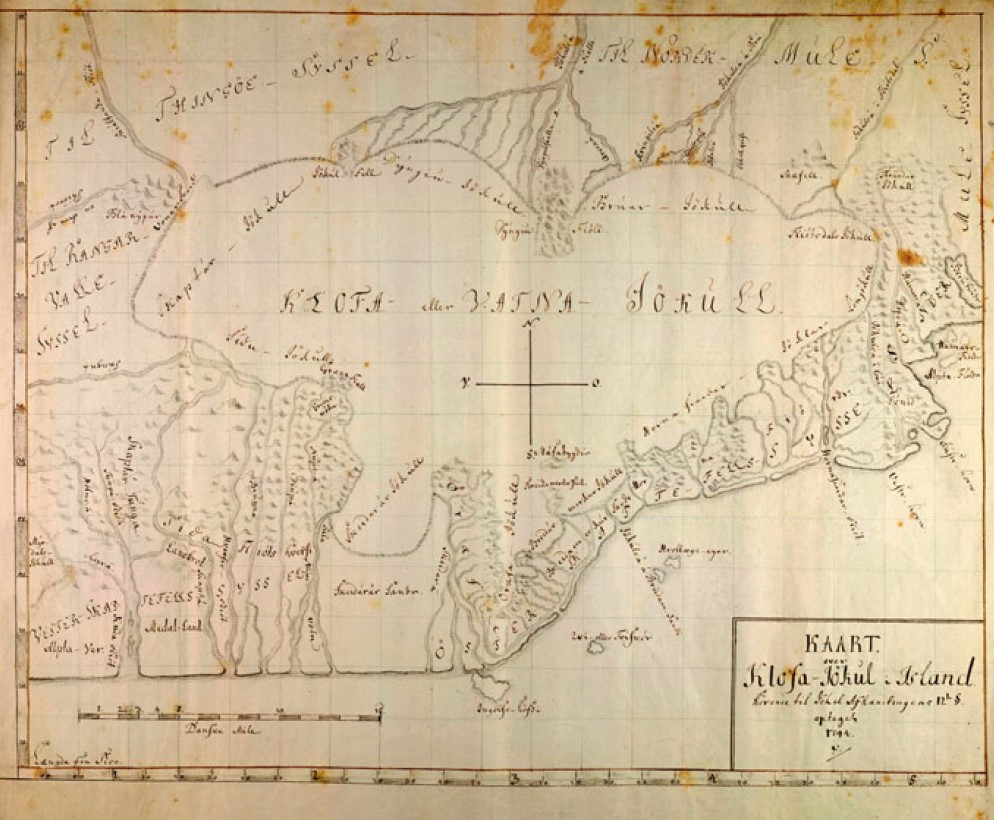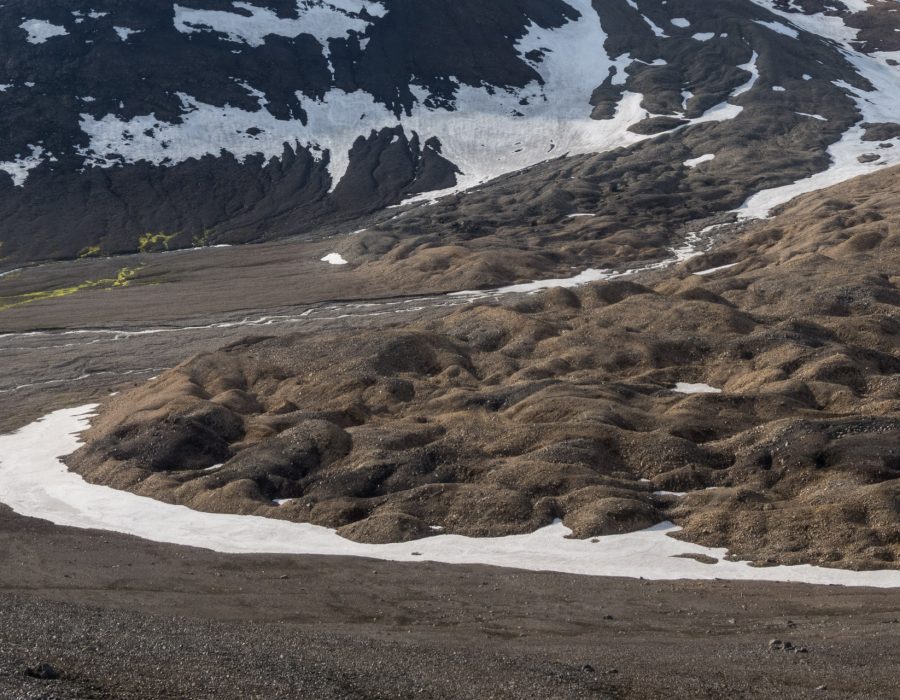Just north of Vatnajökull stands a remarkable mountain named Snæfell or ‘snow mountain’. Its name makes sense, as Snæfell rises 1800 m above sea level and is therefore always snow-capped.

Snæfell mountain actually is a volcano, formed during multiple eruptions in the last four hundred thousand years. Those eruptions happened partly under thick ice sheets that covered Iceland. Since the ice sheet disappeared some ten thousand years ago, no eruptions have occurred. Still, a future eruption is not ruled out (futurevolc.vedur.is).

Four mountain glacier descend from Snæfell: Axlarjökull to the southwest, Sótajökull to the northeast and Dökkurðarjökull and Ljósurðarjökull to the northwest. Compared to other Icelandic glaciers, those surrounding the Snæfell are very small: only two kilometers long at best. Nonetheless they stand out, because Snæfell is the highest mountain of Iceland not covered by the Vatnajökull ice cap. Of the four glaciers, Dökkurðarjökull and Ljósurðarjökull are best known for their remarkable moraines. Together they are also called Grjotárjöklar or Tvíburajöklar (Sigurdsson en Williams, 2008). The glaciers are no longer connected to their moraines, however.
Eggert Ólafsson and Bjarni Pálsson were the first humans to climb Snæfell. When they did so in 1754, they thought Snæfell was the highest mountain of Iceland. Forty years later Sveinn Pálsson, an Icelandic scientist, ascended Snæfell together with Pétur Brynjólfsson. The information they gathered on this trip helped Pálsson to publish a map of Vatnajökull in 1795, depicting the northern margin of Vatnajökull for the first time. This map was the best one of the area until the beginning of the twentieth century, when the Danish Government started a comprehensive mapping campaign. Locals probably couldn’t care less about these maps. For centuries, itinerant fisherman crossed the Vatnajökull on their way to seasonal fishing stations in southern Iceland (Björnsson, 2017: 149+471).



In 1937 the British scientist Lewis undertook an expedition to the poorly known glaciers of Snæfell. He could still recognize small ice outcrops close to the ends of both moraines, of which he knew they were formed somewhere in the previous century. He also noticed there was very little snow on the mountain, although the summer had not been unusually warm. Together with the fact that he did not see any signs of movement in the lower part of Dökkurðarjökull and Ljósurðarjökull, he concluded that both glaciers were retreating (Nennings, 1952). Despite some short-lived intermediate advances, his conclusion holds truth to this date.
Search within glacierchange: